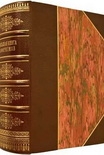Myths and Legends of China E. Werner (best reads of all time .TXT) 📖

- Author: E. Werner
Book online «Myths and Legends of China E. Werner (best reads of all time .TXT) 📖». Author E. Werner
Provisional Conclusion
Pending the discovery of decisive evidence, the following provisional conclusion has much to recommend it—namely, that the ancestors of the Chinese people came from the west, from Akkadia or Elam, or from Khotan, or (more probably) from Akkadia or Elam via Khotan, as one nomad or pastoral tribe or group of nomad or pastoral tribes, or as successive waves of immigrants, reached what is now China Proper at its north-west corner, settled round the elbow of the Yellow River, spread north-eastward, eastward, and southward, conquering, absorbing, or pushing before them the aborigines into what is now South and South-west China. These aboriginal races, who represent a wave or waves of neolithic immigrants from Western Asia earlier than the relatively high-headed immigrants into North China (who arrived about the twenty-fifth or twenty-fourth century B.C.), and who have left so deep an impress on the Japanese, mixed and intermarried with the Chinese in the south, eventually producing the pronounced differences, in physical, mental, and emotional traits, in sentiments, ideas, languages, processes, and products, from the Northern Chinese which are so conspicuous at the present day. Page 18
Inorganic Environment
At the beginning of their known history the country occupied by the Chinese was the comparatively small region above mentioned. It was then a tract of an irregular oblong shape, lying between latitude 34° and 40° N. and longitude 107° and 114° E. This territory round the elbow of the Yellow River had an area of about 50,000 square miles, and was gradually extended to the sea-coast on the north-east as far as longitude 119°, when its area was about doubled. It had a population of perhaps a million, increasing with the expansion to two millions. This may be called infant China. Its period (the Feudal Period) was in the two thousand years between the twenty-fourth and third centuries B.C. During the first centuries of the Monarchical Period, which lasted from 221 B.C. to A.D. 1912, it had expanded to the south to such an extent that it included all of the Eighteen Provinces constituting what is known as China Proper of modern times, with the exception of a portion of the west of Kansu and the greater portions of Ssŭch’uan and Yünnan. At the time of the Manchu conquest at the beginning of the seventeenth century A.D. it embraced all the territory lying between latitude 18° and 40° N. and longitude 98° and 122° E. (the Eighteen Provinces or China Proper), with the addition of the vast outlying territories of Manchuria, Mongolia, Ili, Koko-nor, Tibet, and Corea, with suzerainty over Burma and Annam—an area of more than 5,000,000 square miles, including the 2,000,000 square miles covered by the Eighteen Provinces. Generally, this territory is mountainous in the west, sloping gradually down toward the sea on the east. It contains three chief ranges of mountains and large alluvial plains in the north, east, and south. Three great Page 19and about thirty large rivers intersect the country, their numerous tributaries reaching every part of it.
As regards geological features, the great alluvial plains rest upon granite, new red sandstone, or limestone. In the north is found the peculiar loess formation, having its origin probably in the accumulated dust of ages blown from the Mongolian plateau. The passage from north to south is generally from the older to the newer rocks; from east to west a similar series is found, with some volcanic features in the west and south. Coal and iron are the chief minerals, gold, silver, copper, lead, tin, jade, etc., being also mined.
The climate of this vast area is not uniform. In the north the winter is long and rigorous, the summer hot and dry, with a short rainy season in July and August; in the south the summer is long, hot, and moist, the winter short. The mean temperature is 50.3° F. and 70° F. in the north and south respectively. Generally, the thermometer is low for the latitude, though perhaps it is more correct to say that the Gulf Stream raises the temperature of the west coast of Europe above the average. The mean rainfall in the north is 16, in the south 70 inches, with variations in other parts. Typhoons blow in the south between July and October.
Organic Environment
The vegetal productions are abundant and most varied. The rice-zone (significant in relation to the cultural distinctions above noted) embraces the southern half of the country. Tea, first cultivated for its infusion in A.D. 350, is grown in the southern and central provinces between the twenty-third and thirty-fifth degrees of latitude, though it is also found as far north as Shantung, the chief ‘tea Page 20district,’ however, being the large area south of the Yangtzŭ River, east of the Tungting Lake and great Siang River, and north of the Kuangtung Province. The other chief vegetal products are wheat, barley, maize, millet, the bean, yam, sweet and common potato, tomato, eggplant, ginseng, cabbage, bamboo, indigo, pepper, tobacco, camphor, tallow, ground-nut, poppy, water-melon, sugar, cotton, hemp, and silk. Among the fruits grown are the date, mulberry, orange, lemon, pumelo, persimmon, lichi, pomegranate, pineapple, fig, coconut, mango, and banana, besides the usual kinds common in Western countries.
The wild animals include the tiger, panther, leopard, bear, sable, otter, monkey, wolf, fox, twenty-seven or more species of ruminants, and numerous species of rodents. The rhinoceros, elephant, and tapir still exist in Yünnan. The domestic animals include the camel and the water-buffalo. There are about 700 species of birds, and innumerable species of fishes and insects.
Sociological Environment
On their arrival in what is now known as China the Chinese, as already noted, fought with the aboriginal tribes. The latter were exterminated, absorbed, or driven south with the spread of Chinese rule. The





Comments (0)